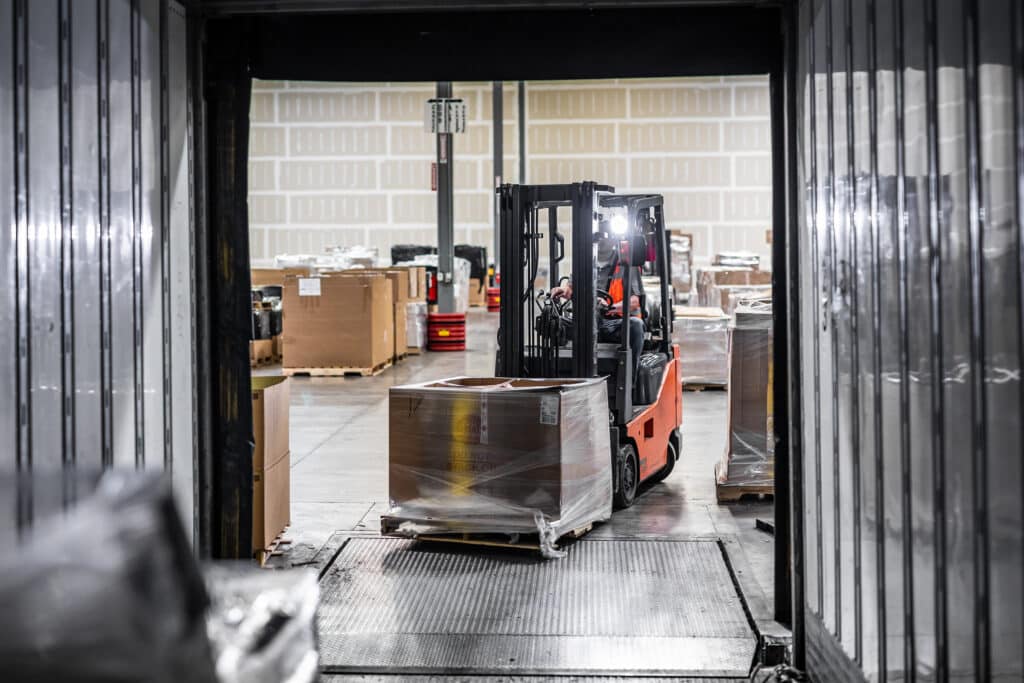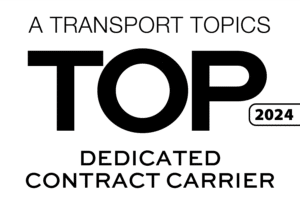
Cutting shipping costs, speeding up processes and reducing labor costs are goals for achieving a lean supply chain that will translate into more profit for your company and better service for your client. Cross docking is a crucial strategy to achieve those goals.
Here you will learn what cross-docking is, its benefits and who would benefit from applying it to their business.
What is Cross-Docking?
Cross-docking is a business model in the supply chain and logistics industry that allows a faster, and even immediate, transfer of goods from the supplier to the customer or retailer. It is based on the reduction of handling and storage.
It eliminates the need to place the goods in storage. Instead, the goods go directly from one truck to another. Providing faster replenishment, cross-docking also eliminates middle and last-mile shipping, which reduces costs. The process positions the inventory closer to the destinations using methods such as distributed inventory models.
Speeding up the retail fulfillment process for shipments, and eliminating the need for long- and short-term warehousing, cross-docking is also benefiting to fit smaller timelines and provide faster processes for customers—not to mention the cut of labor needed if the goods were transported to a warehouse and then pulled out again.
In practice, cross-docking means that goods are unloaded from the supplier’s vehicle into an inbound dock at the cross-docking terminal, sorted and consolidated, and shortly after loaded onto another vehicle that will take it to the next leg of its trip transporting the goods to the client or retailer right away. There is no need to scan inventory into a warehouse management system (WMS).
What are the Potential Benefits of Cross-Docking?
Cross-docking benefits include the ability to speed up order fulfillment processes, save money, save time, and provide a more efficient process.
1. Saves Money and Time
A business’s total cost is impacted by the logistics cost which increases with the need of first-mile and last-mile shipping costs and the carrying costs. A large portion of the inventory expenses are cost of good sold (COGS) and cross-docking can significantly impact it to the benefit of the company.
With a more efficient inventory management process that provides faster replenishment, a business does not need to also cover extensive warehouse costs to get the product to the customer. Cross-docking makes processes such as just-in-time inventory possible.
With cross-docking, tracking inventory is not necessary to make the flow through the supply chain more efficient. The inventory tracking is done by bulk, cutting labor and helping the efficiency of the inventory storage system.
2. Provides a Central Location
The supply chain of a company is optimized with cross-docking by providing a central location where last-mile delivery occurs.
The cross-docking warehouse acts as a sorting facility where goods are delivered from the supplier, sorted out in the distribution center, assigned to multiple carriers depending on the shipping destination, and then placed in the vehicle that will take the goods to it’s last leg of shipment.
The products are in and out of the central location within 24 hours, for the most part. The cross-docking warehouse acts as a central location, which can also handle inventory for B2B fullfilment where storage and single-item fulfilment is not necessary.
3. Less Room for Error
Thanks to the less comlex process in the supply chain, perishable goods are able to hit the shelfs or arrive to the customers before its expiration date and with a larger window to be used while it is still in great conditions.
Cross-docking involves less material handling, and helps maintain the quality of the goods. This is specifically true for food and beverage items, and those items with a shorter shelf-life such as makeup, medicine, vitamins and supplements. For such products, as soon as they arrive, they are transported via forklift, conveyor belt or pallet truck to the outbound dock.
Because the product does not have to be scanned and stored into a warehouse, and instead it is immediately picked up and shipped, the risk of damaged goods decreases, maintaining them in the best conditions with a larger sales window.
Who Can Benefit From Cross-Docking?
Companies with consistent demand and high inventory turnover use cross-docking, but it is not limited tos uch businesses to use it. In fact, almost all kinds of business could benefit from the model if it fits their strategy.
Companies that sell high-demand, essential or perishable products with a shorter shelf life could benefit from cross-docking. This practice will eliminate the need to store the products before being shipped to its final destination. It will cut time and labor cost, and increase the chances of delivering the product with plenty of shelf life.
Business who use multiple suppliers can also benefit from cross-docking. The process moves inventory directly from one destination to another, skipping storage processes and making it easier to manage products coming from multiple suppliers, regions and distribution centers.
The Formula for Success
Automation is key to make the most out of your fulfillment operations. Eliminating labor, cutting costs, and speeding up the shipping processes are key elements to success in the supply chain and logistics industry. Cross-dock is a winning formula for many businesses.

